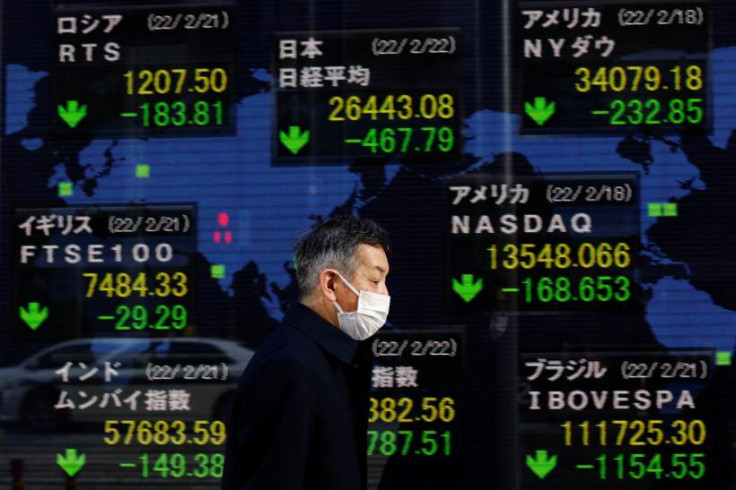Asian stocks follow Wall St futures lower
Core inflation is actually seen rising by 0.4% in April, up from 0.3% the previous month, even as the annual pace dips a bit due to base effects.
Asian markets got off to a shaky start on Monday as U.S. stock futures took an early skid on rate worries, while a tightening lockdown in Shanghai stoked concerns about global economic growth and possible recession.
"A series of rate hikes and hawkish communication came against a backdrop of plummeting Chinese and European activity, new plans for Russian energy bans and continued supply-side pressures," warned analysts at Barclays.
"This creates the gloomy prospect of persistent inflation forcing central banks to hike rates despite sharply slowing growth."
There was no let up in China's zero-COVID policy with Shanghai tightening the city-wide COVID lockdown of 25 million residents.
Speculation that Russian President Vladimir Putin might declare war on Ukraine in order to call up reserves during his speech at "Victory Day" celebrations also hurt market sentiment. Putin has so far characterised Russia's actions in Ukraine as a "special military operation", not a war.
S&P 500 stock futures led the way with a drop of 1.0%, while Nasdaq futures shed 0.9%. U.S. 10-year bond yields edged up to a fresh top at 3.15%.
MSCI's broadest index of Asia-Pacific shares outside Japan fell 0.3%, and Japan's Nikkei 1.2%.
Investors were also tense ahead of the U.S. consumer price report due on Wednesday where only a slight easing in inflation is forecast, and certainly nothing to prevent the Federal Reserve from hiking by at least 50 basis points in June.
Core inflation is actually seen rising by 0.4% in April, up from 0.3% the previous month, even as the annual pace dips a bit due to base effects.
"In Q1, the annualised monthly change in core CPI was 5.6%," noted analysts at ANZ. "That is too high for the Fed and we think the FOMC won't be relaxed about inflation until the core number moderates to around 0.2% m/m on a sustained basis.
"The Fed is not the only central bank facing inflation pressures. Increasingly, the guidance from the ECB is becoming a lot more hawkish."
DOLLAR IN DEMAND
Fed fund futures are priced for rates reaching 1.75-2.0% in July, from the current 0.75-1.0%, and climbing all the way to around 3% by the end of the year.
The diary is full of Fed speakers this week, which will give them plenty of opportunity to keep up the hawkish chorus.
The aggressive rate outlook saw the U.S. dollar scale 20-year highs on a basket of majors last week at 104.070, and it was last trading firm at 103.820.
"Risk appetite is fragile and yield spreads continue to suggest further upside on the Dollar Index," said Sean Callow, a senior FX strategist at Westpac.
"We look for ongoing demand for DXY on dips, with 104 already being probed and still potential for a run towards 107 multi-week."
The euro was stuck at $1.0530 and just a whisker above its recent lows of $1.0481, while the dollar was very much on control against the Japanese yen at 130.88.
Oil prices eased back a little on fears about Chinese demand, while the Group of Seven (G7) nations committed on Sunday to ban or phase out imports of Russian oil.
Brent was last quoted 63 cents lower at $111.76, while U.S. crude lost 61 cents to $109.16. [O/R]
Gold was idling at $1,877 an ounce, having struggled to make any traction as a safe haven recently. [GOL/]
(Editing by Sam Holmes and Himani Sarkar)
© Copyright Thomson Reuters 2022. All rights reserved.

Copyright Thomson Reuters. All rights reserved.





















